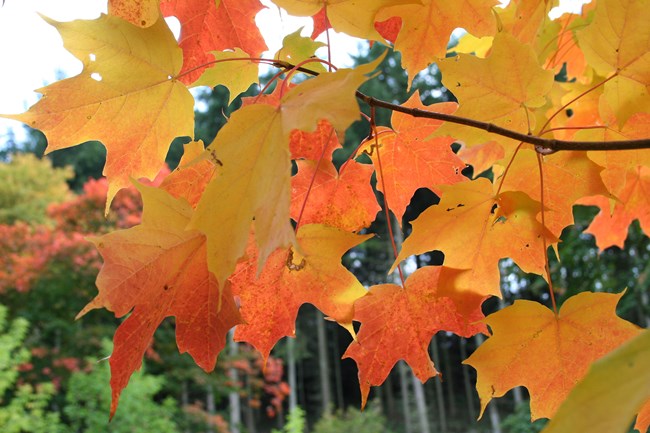
This large tree with its broad, five lobed leaves is the quintessential tree, along with oaks and basswood, of the eastern deciduous forest in our area. Its bark is dark brown and deeply furrowed with long, scaly ridges in older trees. The seeds are the familiar “helicopter” winged seeds with which children enjoy playing. Most of us are aware this is the tree that is “tapped” in early spring for its sap, which is then boiled down to make delicious maple syrup and maple sugar. What is less well-known is that other species of trees, such as aspens, can also be tapped but the sap of sugar maple has the highest sugar content. Sap begins to flow in spring when daytime temperatures surge above freezing, but night time temperatures fall below freezing. These beautiful trees, with their attractive green summer foliage and flaming orange, gold, and red autumn foliage, are shade tolerant and tend to dominate older forests. In young forests, sugar maples grow slowly in the shade of light-loving trees—a sugar maple less than an inch in diameter may be 40 years old. Once sunlight becomes available, such as when a large nearby tree is cut or falls, the spindly sugar maples grow rapidly and may live for longer than 200 years. Fascinating FactsIt takes between 32 to 40 gallons of maple sap to produce one gallon of syrup. A sugar maple tree may produce between 5-60 gallons of sap each year. Native Americans living in the eastern deciduous forest used maple sugar as one of their primary food flavorings. Sugar maples are desirable landscaping trees, but they tend to grow slowly. They are, however, a beautiful investment in the future of our cities and rural landscapes. The wood is highly prized for furniture. Find ItSugar maples are found along the Winchell Trail in the Mississippi Gorge Regional Park. |
Last updated: January 4, 2018
